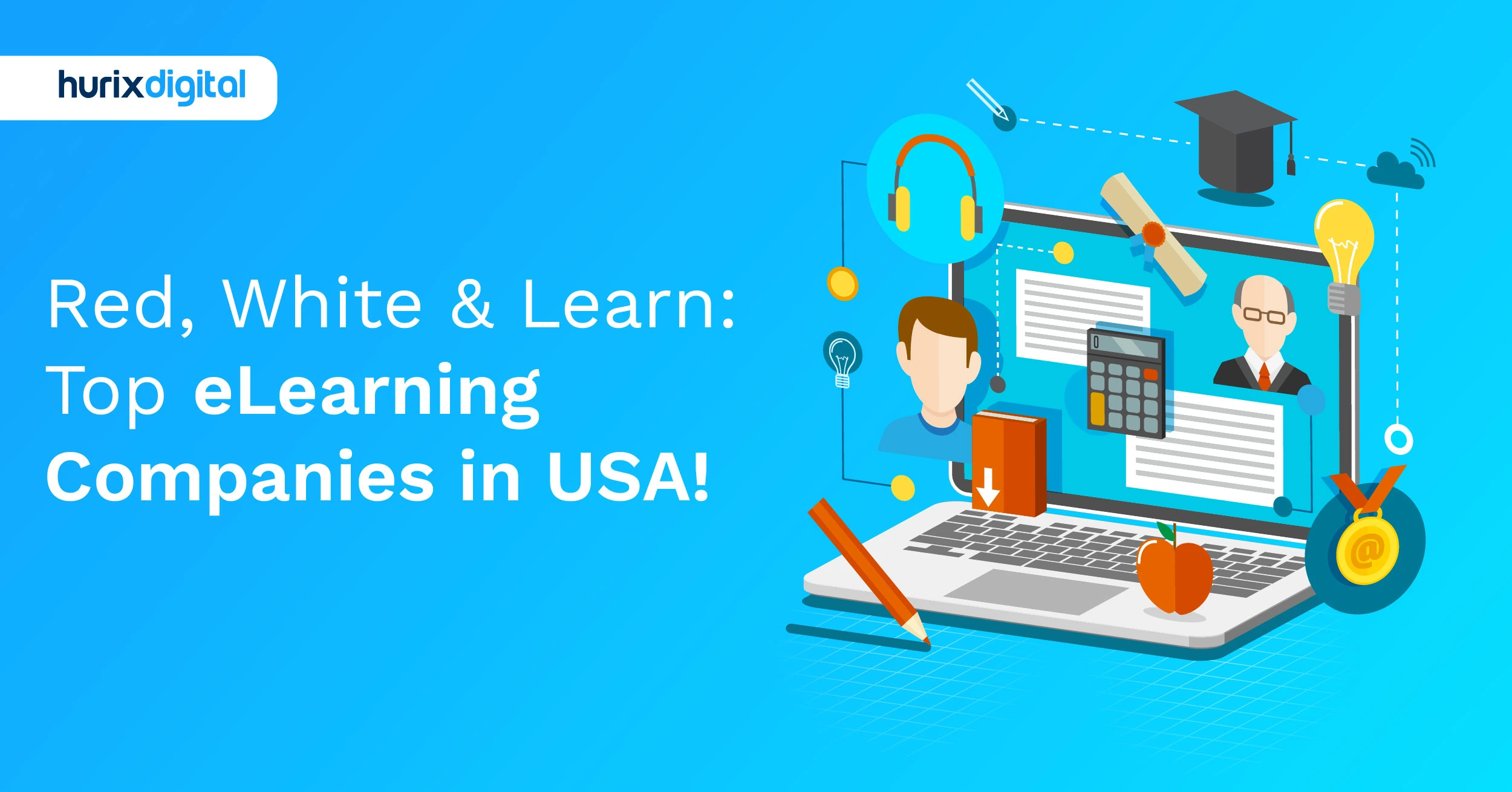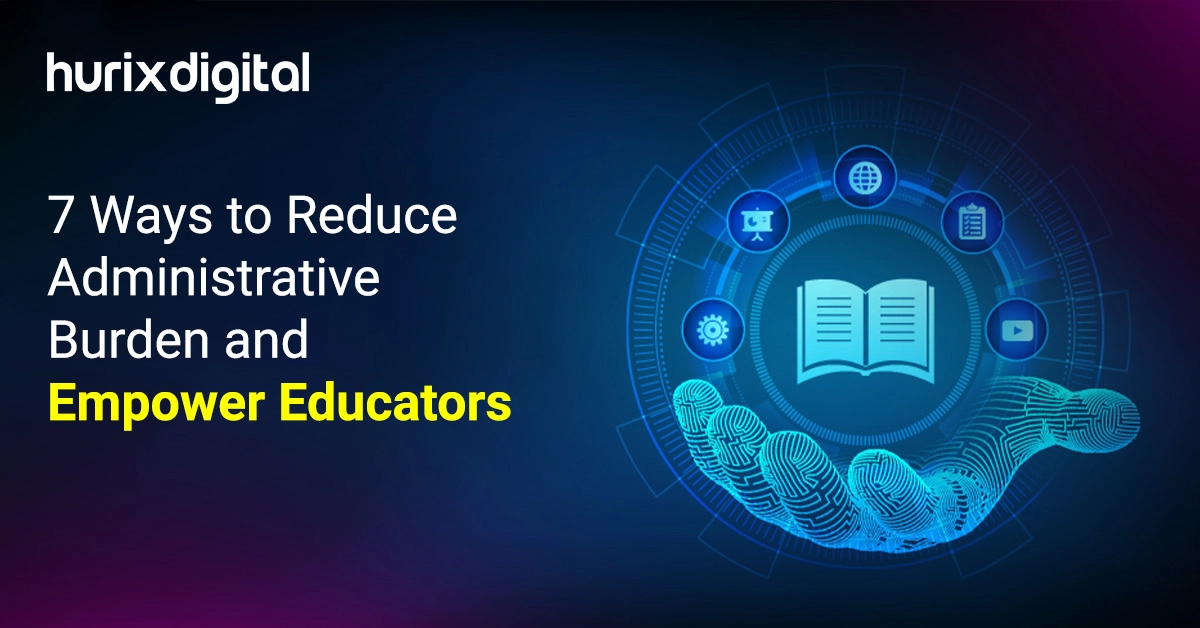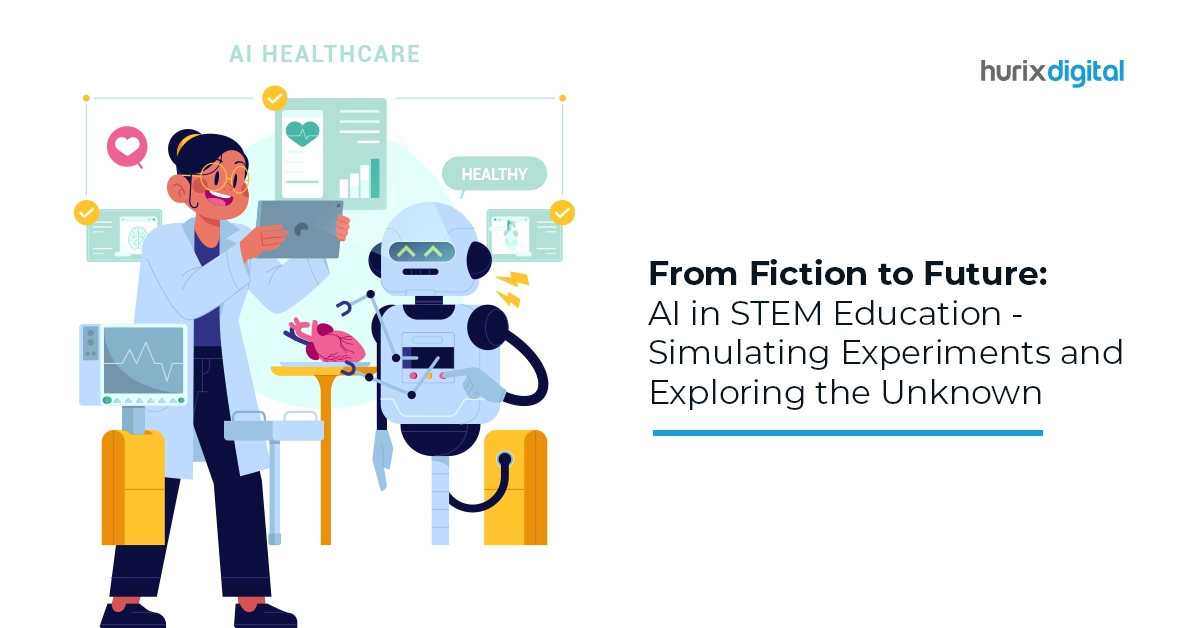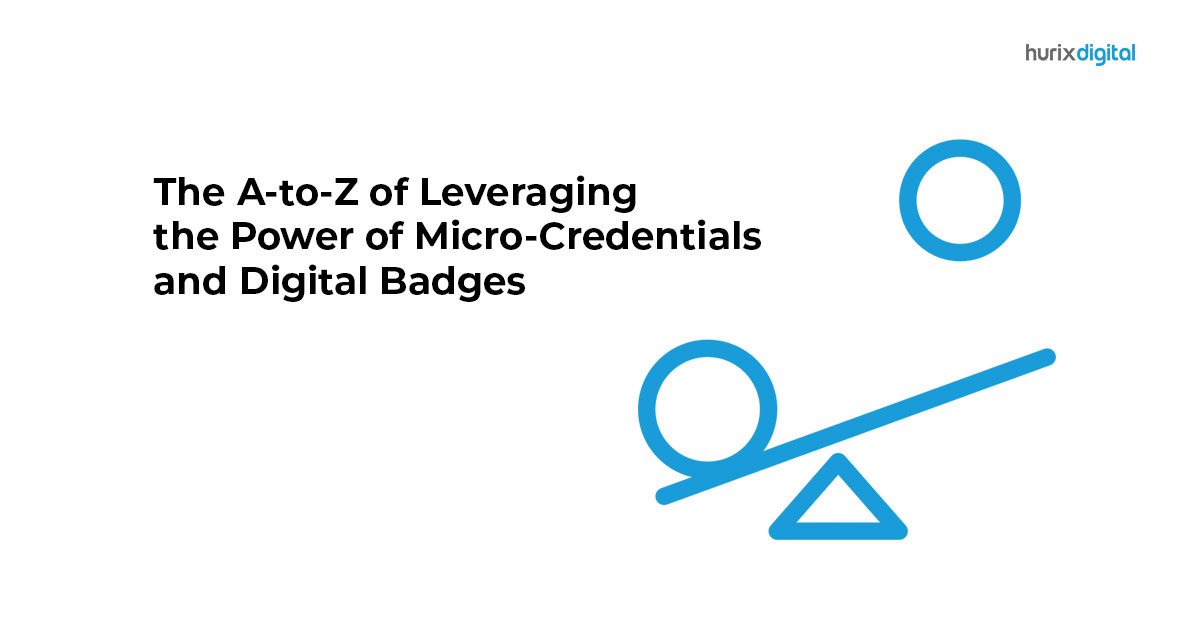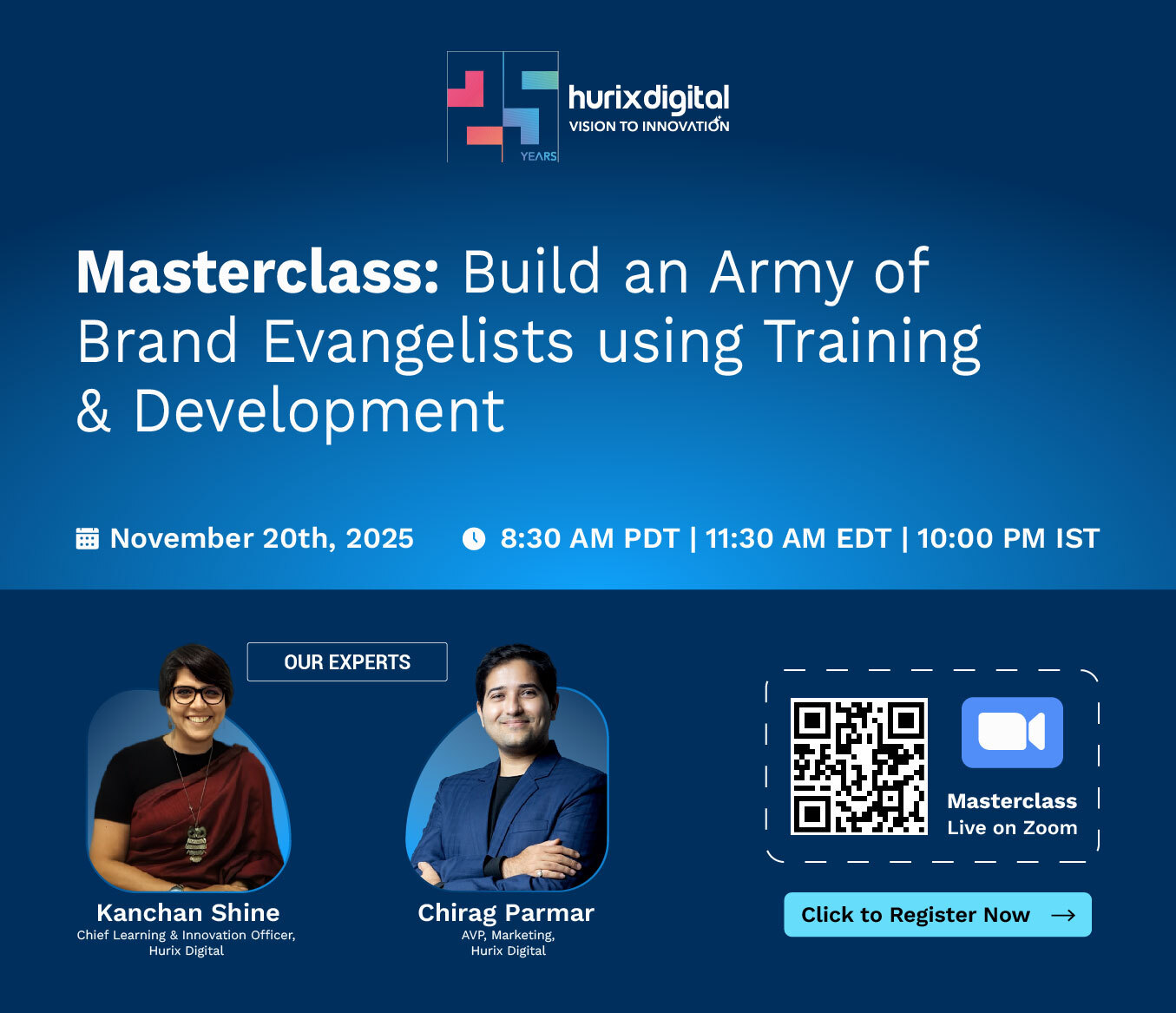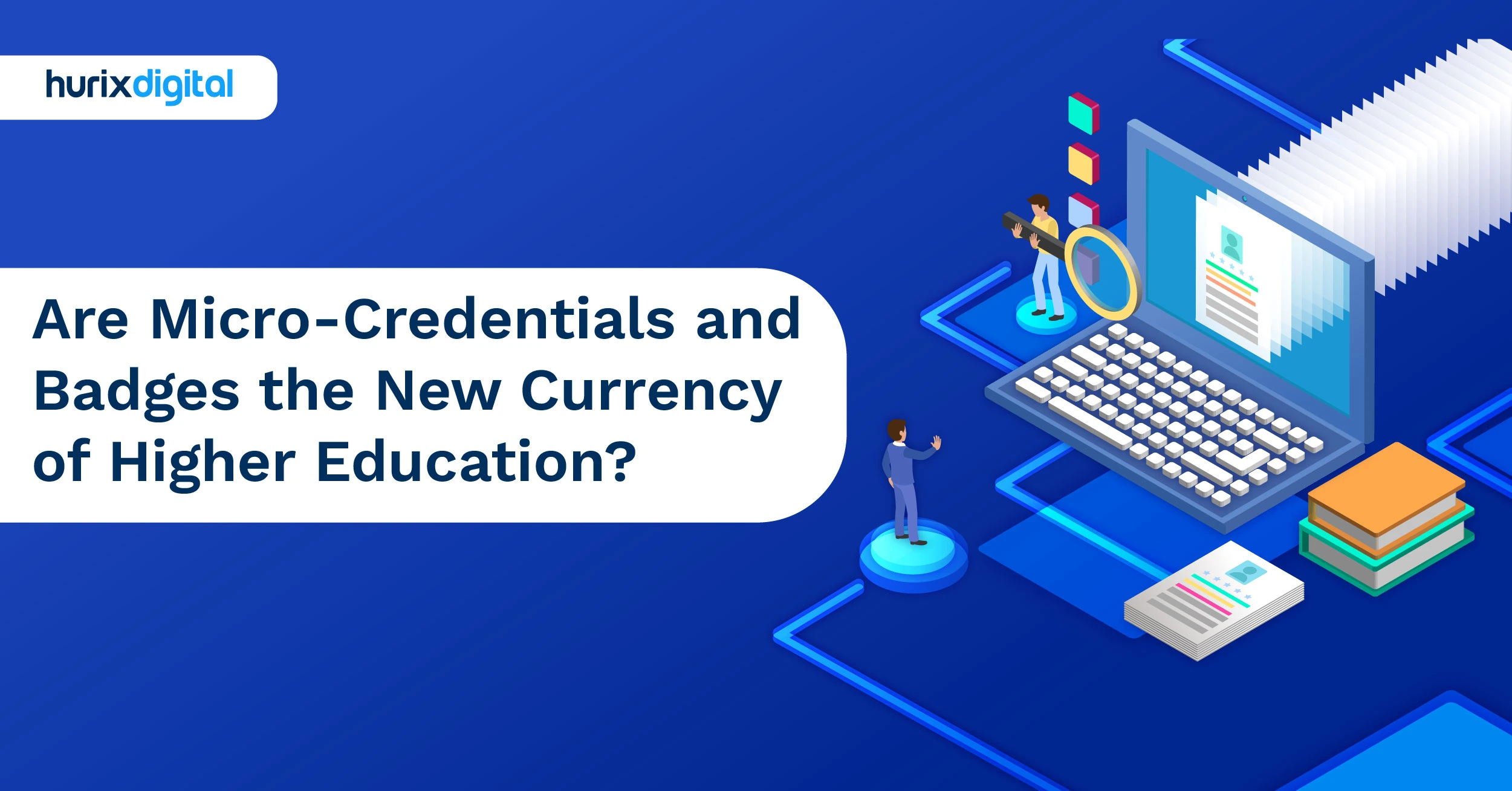
Are Micro-Credentials and Badges the New Currency of Higher Education?
Summarize with:
The educational landscape has been rapidly evolving in recent times. The pandemic itself has been key in highlighting several inequalities in different academic disciplines. As the purpose of education becomes increasingly skill-oriented as opposed to earning a degree, graduates are finding it more and more difficult to prove their merit in the job market.
To keep up, alternative credentials are now becoming mainstream, and EdTech solutions are the way to achieve those goals.
Alternative credentials refer to micro-credentials, such as a professional or technical certification, proof of apprenticeship, or one of the many similar professional development badges. Unlike full-time degrees, these are meant to be supplementary.
They take less time to achieve and cost a fraction of a university course. However, they are irrefutable proof that a person has specialized training and is highly regarded in employment circles.
EdTech solutions gained prominence during the pandemic. Learners worldwide have now started leveraging the power of personalization and flexibility to earn their online learning credentials.
Today, let us discuss the long-term benefits of earning micro-credentials, what they are, what they offer, and, most importantly, how you can choose and acquire digital credentials to give your career a much-needed boost.
Table of Contents:
- Why Should I Invest in Skill-Based Certification?
- Types of Alternative Credentials
- What are Micro-Credentials?
- How Do Micro-Credentials Work?
- Factors of Focus for Universities Implementing Micro-Credentials
- Leveraging Technology for Better Learning
Why Should I Invest in Skill-Based Certification?
Before investing further in understanding the different types of credentials, let us first take a deep dive into why you should invest your time and resources into earning these online learning credentials:
- Relevance: Skill-based certifications can help you remain relevant by updating your skills to the current job market requirements.
- Specialization: Specialization in many fields attracts employees who look at you as the answer to their problems.
- Competitive Edge: It gives you an upper hand over any other candidate with traditional degrees.
- Career Advancement: Often, digital certificates prove your commitment to the job and can lead to promotions.
- Networking Opportunities: Many certification programs offer networking opportunities with professionals in the field.
- Increased Opportunities: Working within your current organization or other organizations in the same vertical gives you access to more opportunities.
- Return on Investment: Certifications usually cost less than a traditional degree program and yet often provide better short and long-term benefits.
- Future-Proofing Your Career: With the rapid pace of technological change, certifications can help future-proof your career by ensuring your skills remain relevant.
Types of Alternative Credentials
Now that we have established the benefits of earning alternative credentials let us take a look at the options available to us.

1. Micro-Credentials
Micro-credentials are short courses that offer a person the chance to learn a new skill. They are designed to be fast and accessible, and the goal is to advance one’s career in a short amount of time.
2. Badges
Some courses offer a digital representation to certify their completion. Such courses, usually called badges, offer an image along with metadata unique to you. They verify the authenticity of your earned skills and are often used to gain the confidence of prospective employers.
3. Bootcamps
Bootcamps are an immersive and intensive short-term program. They are designed with very short-term gains in mind and are primarily driven by market forces. They are one of the most affordable ways to acquire a deep understanding of a new skill. Usually backed by a university or equivalent certification, they can really help you deck up your portfolio.
4. Professional Certificates
These are certification programs run by professional societies and universities. They are designed with industry standards in mind and are spread out across weeks or even months. The idea is to acquire a skill sustainably.
5. Nanodegrees
Nanodgrees aims to break down the idea of acquiring a degree into short, skill-based programs. Usually consisting of video courses for flexibility, they closely follow traditional curricula but modify them to meet the needs of working professionals. They are project- and skill-based credential programs meant to boost your professional career.
6. Competency-Based Credentials
These are credentials awarded after confirming your proficiency and in-depth knowledge of a specialized skill. They are a continuation of your formal technical training and are offered as per the current needs of the industry. As they are offered by professional societies and universities, they are held in high regard by employers.
7. Open Badges
Badges are verifiable digital awards you can earn by completing specialized skill training. Employers can verify them using their secure metadata. They can be earned through any certified open-badge platform. The best part is that you can use them as email signatures, on personal web pages, and even on social media sites like LinkedIn and Twitter to prove your proficiency and engage prospective employers.
8. Massive Open Online Course (MOOC) Certificates
These are the equivalent of traditional correspondence degrees but on a digital platform. They are often provided by industry giants, and the certification holds much weight within the field. Like badges, MOOCs also come with digital signatures and encryption, making them verifiable and trustworthy.
What are Micro-Credentials?
Explained simply, higher education micro-credentials are a framework that allows a university to deliver competency-based qualifications to learners in a modular manner. Consider it a bite-sized learning program rather than a full-fledged certification course.
The highlight of micro-credentials in higher education is that they deliver deep and focused knowledge of a specific topic instead of providing comprehensive knowledge of an entire field of instruction.
The students, having completed a micro-credential, receive a digital badge and/or certificate, deeming them qualified in a specific topic. For example, a learner can opt for online micro-credential courses in Data Visualization in Tableau. This is a very specific skill that allows the candidate to learn deeply about data visualization in a specific software.
How Do Micro-Credentials Work?
The need for digital micro-credentials in education is fueled by the demand for updated knowledge in the workforce and the dynamism of evolving technologies. As employers give preference to candidates with specific skill sets, students find it more rewarding to opt for micro-credential courses to build up their chances of landing a good job.
Micro-credential certification programs work by providing learners with digital, accessible, targeted, and certified educational programs that are relevant in the world today. Furthermore, universities are experimenting with stackable micro-credentials. Stackable micro-credentials are a progressive course of targeted modules that cover a topic in advanced detail and can be combined in various ways to create new portfolios.
Factors of Focus for Universities Implementing Micro-Credentials
Countless higher education institutions have already begun to adopt micro-credential-based learning ecosystems in their offerings. Below is a detailed discussion of the chief aspects these universities focus on to adapt to micro-credentials in higher education:
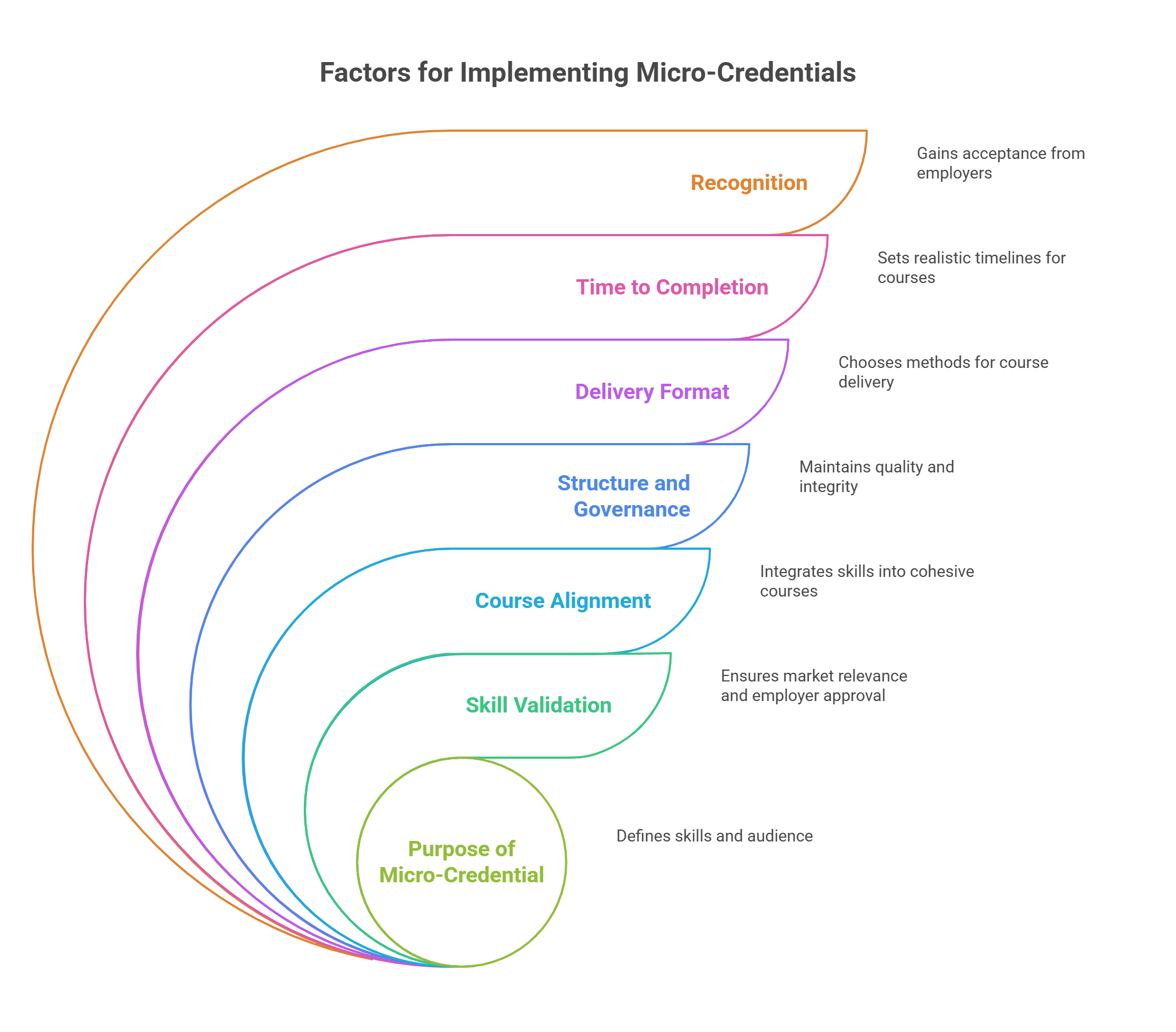
1. Purpose of a Micro-Credential
One key factor that universities consider is setting a purpose for every micro-credential course they offer. They gather the stakeholders and discuss what skills or skill bundle the course will focus on, what level of specialization it would impart, and how it would convey that a student has gained applied skills from learning it. Additionally, the university decides on a target audience for this skill set.
2. Skill Validation
It is essential to consider identifying the skills and opportunity demand of the market before deciding on the micro-credential courses they will offer. You can mobilize your internal research network or work with external stakeholders to identify the key or target skill areas that will stay relevant for the coming years.
It is also important to have each skill identified and duly validated by employers so that their relevance and need can be verified.
3. Alignment with Courses
The most challenging aspect of implementing micro-credentials is aligning the identified skills and competencies with a course or creating a course out of them. For example, “Creating machine learning models for business intelligence” is an identified competency.
However, aligning it with a course requires incorporating various skills into one package, like learning programming languages and machine learning intricacies. It is of paramount importance to create a course that could give the learners real-world competency in developing useful BI models.
4. Structure and Governance
Creating a structure for the course and laying out the policies for its governance is crucial to ensure that the quality of the learning is maintained and standardized. Every university has the freedom to come up with its own structure for the course, and its way of governing it based on the delivery formats decided.
It helps to set up a dedicated committee whose sole purpose is to maintain the integrity and relevance of the micro-credential courses and manage their governance.
5. Delivery Format
One key consideration you would need to deliberate on is the mechanism to use to deliver micro-credentials to the learners. Broadly, there are three categories: hybrid, physical, and digital delivery methods. If you require more flexibility, you can consider a combination of these methods, like offering digital courses to remote students while conducting a physical classroom for the local ones.
The method you choose will also dictate the governance and structure of the course, how it should be regulated, and the copyrights and licenses that would apply to it.
6. Time to Completion
Micro-credential courses offer candidates a quick way to gain in-depth knowledge about a very specific topic. Therefore, universities must plan a pragmatic timeline for these courses that allows for swift completion while ensuring that all the bases are covered.
The typical length of a micro-credential course is 10 to 12 weeks. Depending on what is included, you may design your course to be shorter or longer.
7. Recognition
One of the most crucial aspects of a micro-credential course is making it acceptable and recognized by employers. This is different from having it endorsed. Recognition of the course by employers and other organizations where it is required helps students gain confidence in enrolling in it.
Leveraging Technology for Better Learning
As education continuously evolves, universities must mobilize relevant mechanisms that support the transformation and empower students to take control of their futures. Micro-credentials in higher education are a step towards creating a more capable and practical workforce with relevant and upgradable knowledge.
The real consideration, though, lies in the delivery and management of micro-credential courses at universities. Partnering with the most capable technology providers, like Hurix Digital, can help streamline the management, governance, structuring, and delivery of these courses for universities.
We facilitate a robust framework of digital technologies using which universities can develop courses and hire editorial services and professionals to deliver the knowledge to students. To explore the full extent of Hurix Digital’s services for micro-credentials in higher education, give us a call today!
Summarize with:

Senior Vice President – Business Development
at Hurix Digital, with over 25 years of experience in EdTech and workforce learning. He excels in business development, customer relationship management, and scaling digital learning solutions, driving global growth through innovative content, simulations, and AI‑driven training offerings
 Upcoming Masterclass | Build an Army of Brand Evangelists using Training & Development | November 20th, 8:30 AM PDT | 11:30 AM EDT | 10:00 PM IST
Upcoming Masterclass | Build an Army of Brand Evangelists using Training & Development | November 20th, 8:30 AM PDT | 11:30 AM EDT | 10:00 PM IST

